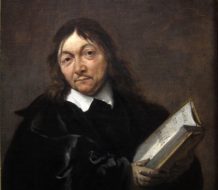Some people believe that nature makes people good, others say that it is habit, and still others say that it is teaching. Experience shows that logical arguments and teaching are not effective in most cases. The soul of the student must first have been conditioned by good habits just as land must be cultivated to nurture seed.
— Aristotle
Introductory texts on character education typically posit two distinct versions of it: a “direct” form of taught commands and behavior modifications, and an “indirect,” more wishy-washy form of moral nurturance where admirable traits of character are gradually caught from moral exemplars. One of the advantages of Aristotelian character education – which we in the Jubilee Centre for Character and Virtues have adopted as our normative framework is that it neatly straddles this unhelpful dichotomy. The briefest of looks at the dichotomy shows that it is impossible to situate Aristotle’s theory within just one of the two categories. Aristotelian character education will clearly emphasize the different learning styles of children and adults (which is supposed to be an indirect-approach criterion), but at the same time highlighting the role of early-age reinforcements (in line with the direct approach). Aristotle’s method is all about nurturance and tacit modeling (indirect approach), but it also foregrounds the salience of firm external guidance (direct approach). Moreover, one need not be an Aristotle expert to know that for him the cultivation of virtues as stable traits of character is not tantamount to the modification of mere behavioral habits, but also involves perceptive, emotional, and motivational elements.
On the Aristotelian conception, then, virtues are both “taught” and “caught,” and the double benefit of deliberately teaching and learning from moral exemplars begins as one integral process in the early years of life. The virtue formation of children begins when their first cries are answered. They start to learn about the moral contours of the world even before they can properly hear and see. They find out something about themselves and those who care for them, by communicating and being answered. Their moral self-conceptions are being formed through basic emotions such as love and fear and how others respond to these emotions. Indeed, virtues build on love, because love builds a bond between children and parents and provide them with a sense of psycho-moral security. This teaching through nurturance by mothers and fathers goes on at a very deep level – at that very core of our being which academics refer to as “selfhood.” Early teaching of this sort impacts on the child’s future flourishing in ways that we do not yet fully understand.
The picture painted here may indicate that the education of character is all about tacit modeling. Indeed, Aristotle is often drawn upon to argue that virtues are best taught by the experience of observing others who demonstrate excellence of character. It is true that he maintained that examples of well-ordered lives must continually be set before children for character education to work. However, he also pointed out that the emulation of moral exemplars can easily degenerate into uncritical impersonation, rather than critical emulation, of the characteristics that the role model stands for – and the stronger the tie is between the role-model and the learner, the greater the danger that the learnt motivation becomes extrinsic, upon pleasing the role model, rather than intrinsic, upon the point and pleasure of the virtuous activity. This is why mere “habituated virtue” is not true virtue, in Aristotle’s theory of moral development, but only one of the stepping stones on the way to “full virtue”: a reflective, discriminatory state of character, guided by the intellectual virtue of phronesis or good sense. The exercise of phronesis-guided virtue is a matter of rational agency or reason-responsive conduct requiring reflection and deliberation. This is why good parents do not only display good character; they also explain to their children what is good about it and engage them in constructive dialogues about the “stories” of flourishing lives. Again we see how successful moral education always involves interplay between the caught and the taught.
All through children’s early years and into adolescence, parents continue to form their character, and they do so whether they want to or not. The virtues they model and teach enable the children to attain their potential. The virtues make them fit for human life – just like wings make birds fit for flying – but they also help them shape life, by steering the way in which the children learn to conceptualize the world and perceive of states of affairs as just or unjust. The moral virtues are thus not only individual “skills” but the building blocks of all social graces, enabling us to build a good and just society. Children are first born into a small moral community called the family, but this community steadily extends to larger social networks in which they are exposed to an increasing range of moral exemplars in teachers and friends. Initiation into this community takes time and continues into adulthood on a trial-and-error basis. Just as in early childhood, virtue is therefore both taught and caught through progressive experiences in these networks. We are literally all a work in progress until the day we die.
How do we best engage young people in moral dialogues about the stories of their lives? Aristotle held that literary stories of cultural inheritance have a power to illuminate moral and other aspects of human motivation, feeling and agency in a way that other (say natural or social scientific) sources of knowledge and insight are not necessarily equipped to do. Through a study of literature we can gain a practical conception of what virtues really mean, what look like in life, and how they can be operationalized. Stories can awaken love for what is good. Since Aristotle viewed the development of emotions and motivation as crucial to the cultivation of moral virtues, he regarded exposure to narratives as playing a large role in the education of the desires and emotions which phronesis is particularly concerned to order and regulate. Stories, especially those that can be projected on a larger screen, are useful teaching aids to enhance what we may call “virtue literacy”
However, it must be recognized that knowledge of the virtues themselves will not necessarily change behavior. A child may acquire some cognitive understanding, through direct teaching, of what would be the desirable virtue to display in certain circumstances, but be unable to translate this knowledge and reasoning into virtuous action. Virtue practice therefore constitutes the desirable and observable attitudes and behaviors demonstrated by a child. This is why the gap between recognizing and understanding virtue, on the one hand, and performance of virtues, on the other, requires the example of lived modeling of exemplars. We need to watch others who have already acquired the virtues to help us choose the good life. Families and schools ought to provide opportunities for children to exercise the virtues in practice as well as encourage a rich discourse of virtue language, understanding and reasoning. How children develop their virtue literacy is, however, intrinsically a contextual and personal matter and is not something that can be easily traced in a linear or developmental fashion. Socially sensitive virtue literacy is about the ability to know, to understand, to feel, and to do what is morally appropriate in the given circumstances, and it requires considerable intuitive artistry – gained only through experience – in addition to a grasp of general moral truths. It requires children to be motivated, to be ready and have the aptitude to learn from others.
Human flourishing is the aim of virtue education which in turn forms good character. This involves disciplined explorations of profound questions, which means we need to develop the capacity to think – through a good education and through the people we meet and socialize with. People of excellent character are able to pursue a virtuous life because they are disciplined themselves to reject superficial conceptions of the ends worthy of pursuit. They have realized that there is more to life than “getting and spending,” and that the only truly rewarding life stories are the stories of virtuous lives. Each such a life is a journey, fraught with dangers and mistakes, but those who grow in virtue are among the truly happy.
Contemporary moral philosophy is commonly lambasted – by moral psychologists for example – for its lack of attention to developmental issues and its almost complete neglect of childhood. Aristotle’s stance is so radically different here that he could almost be accused of the opposite error: of reducing moral philosophy to character education. For the purpose of moral inquiry is, as Aristotle put it, “not to know what virtue is, but to become good, since otherwise the inquiry would be of no benefit to us.” In this article, we have argued that in order to learn to understand the journey towards moral goodness, we need to transcend the proverbial caught-versus-taught dichotomy. More generally, we have argued that Aristotelian character education is a suitable theoretical platform from which to launch such a journey.
Discussion Summary
We are grateful to the people who posted comments on our piece, “Is Good Character Taught or Caught?” and those who contacted us personally with their observations. We are also grateful to the 7,000 individuals who signed up for recent Jubilee Centre/University of Birmingham MOOC (massive open online course) on “What is Character? Virtue Ethics in Education” and for the almost 11,000 comments they posted. Many of those happened to address issues directly bearing on the topic of our JTF Big Questions Online piece, “Is Good Character Taught or Caught?”
While the overwhelming number of comments were sympathetic to the view expressed in our BQO essay, a lingering worry conveyed by some skeptics was that no matter whether good character is considered to be mainly caught at school (through the school’s ethos and covert role-modelling, for example) or taught in discrete classes on character/moral education, both avenues of virtue acquisition are anti-intellectual in the sense that it is not the students themselves who are critically adopting a moral conviction of their own accord.
Once again, we need to emphasize that the theoretical assumptions adopted by the Jubilee Centre for Character and Virtues about virtue acquisition are distinctly Aristotelian. In the present context, it is important to remember that Aristotle was beholden to a powerful and uncompromising idea: that without the eventual development of the integrative and adjudicative faculty of phronesis – good critical sense of autonomous decision-making – virtue remains but a charade. Aristotle’s stringent condition about the eventual moral worth of virtuous activity as grounded in autonomous reasoning serves to defuse the challenge that character education is essentially anti-intellectual. For if it is, it is not really character education on the Aristotelian understanding at all, but rather character conditioning. If the complaint is, rather, that some particular programs of character education – for instance as practiced in some school districts in the 1990s – were delivered in an anti-intellectual and anti-democratic way, then this may well be the case. But so much the worse for those programs and the students who were at the receiving end of them rather than for character education as such.
Obviously, if an approach does not count as “intellectual” unless it champions the student’s own subjective choice of subjective values from a buffet of qualitatively undifferentiated options, then character education will not count as intellectual. However, in our view such a conception of rational choice is not only coarse and naïve but dangerously wrong.
The stringent Aristotelian condition about the proper guidance of phronesis places considerable demands on any viable program of character education. The focus is no longer on the correctness of individual actions, but rather on their role in a well-rounded life and their roots in the “inner world” of the student – in stable states of character that incorporate motivational and emotional elements. In other words, what matters in the end for moral evaluation is not merely observable behavior, but the emotions with which an action is performed, the motivation behind it, and the manner in which it is performed. Moreover, the virtues are not understood primarily as complexes of duties and obligations but rather as goals of personal/moral aspiration.
For example, a student can exhibit virtuous-looking behavior (say, help a fellow student in need), but do so for the wrong reasons (to receive praise from others). Conversely, a student could fail to exhibit helping behavior for some reason in a particular instance (out of panic, or because of a conflict with other more morally crucial tasks awaiting attention) but still feel a strong sense of compassion for the fellow student in need. In the former sort of situation, the student would not be displaying the virtue of compassion but she would in the second.
This Aristotelian observation carries significant implications for the question of how to measure the impact of programs of character education. It will not be enough to record a reduction in instances of bad behavior, such as a reduction in knife crime among students or fewer verbal assaults in the classroom. We need somehow to penetrate to the “inner world” of the student to gauge whether or not a change of emotional disposition and motivational make-up has occurred – quite a tall order from a methodological point of view.
In light of these observations, we would like to suggest two further Big Questions to you.
New Big Questions:
1. How is phronesis constituted and best taught in classroom contexts?
2. How can researchers best penetrate to the inner world of students to gauge the real impact of programs of character education?













Thank you for your essay. There may also be a third way in addition to imitation and direct teaching. Tomasello et al. (1993) posit three ways cultural learning takes place: imitation, direct teaching, and collaboration. Collaboration may mean the virtue resides both inside the person as a character trait, and outside the person, within a group as a shared value. It may also require the explicit naming of the virtue (e.g. in this community we practice honesty) as a precusor to the practice. However, one might imagine reflection after the fact (e.g. in that discussion with each other we were honest) as a possible way to collaboratively learn virtue. At any rate, it would seem to involve some kind of joint action and reflection (recognition?) in order for learning to take place.
A good point, Peter. It is also very much in line with Aristotle’s emphasis on cultural immersion. In this article, we focused on messages from the Nicomachean Ethics, in order to rebut the common taught-versus-caught dichotomy, but in order to grasp the whole picture of an Aristotelian view of moral education, we also need to take on board his social theory from the Politics. Aristotelian character education is about much more than “fixing” individual kids. Collaborative, critical, and reflective thinking is vital, as you correctly point out. Contemporary forms of character education tend to be overly individualistic.
I would agree that “modelling” is not enough and, in fact can lead to disaster in theraising of children. I also believe in (and have seen) the power of story to engage young minds in an understanding of virtues which they intuitively feel.
One observation – I have read hundreds of childrens books to my children and grandchildren, and I have found that many of the newer titles are rather dull regurgitations of politically correct values. I find mostly the same thing in children’s television. That kind of character education seems to be shallow and next to useless. Many older titles may fall into a PC gray zone – but carry far more proufound and memorable lessons. This past weekend we read a variety of stories to my 5 and 7 year old grandchildren, and the “Just So Stories” of Rudyard Kipling had by far the fewest pictures but were the most memorable. My 7-year old granddaughter later said “a really good story has a big problem that has to get solved.”
Good virtue literature would seem to be critically important to virtue literacy. This might be a good place to focus.
We agree with you completely, George. The most successful intervention we have tried to date with young students is a literature-based intervention, aimed at enhancing virtue literacy, based on classic stories: the King Arthur legends, Don Quixote, El Cid and the Merchant of Venice. See further on http://www.jubileecentre.ac.uk/417/projects/development-projects/knightly-virtues
A full research report is available for download here: http://www.jubileecentre.ac.uk/1548/character-education/knightly-virtues